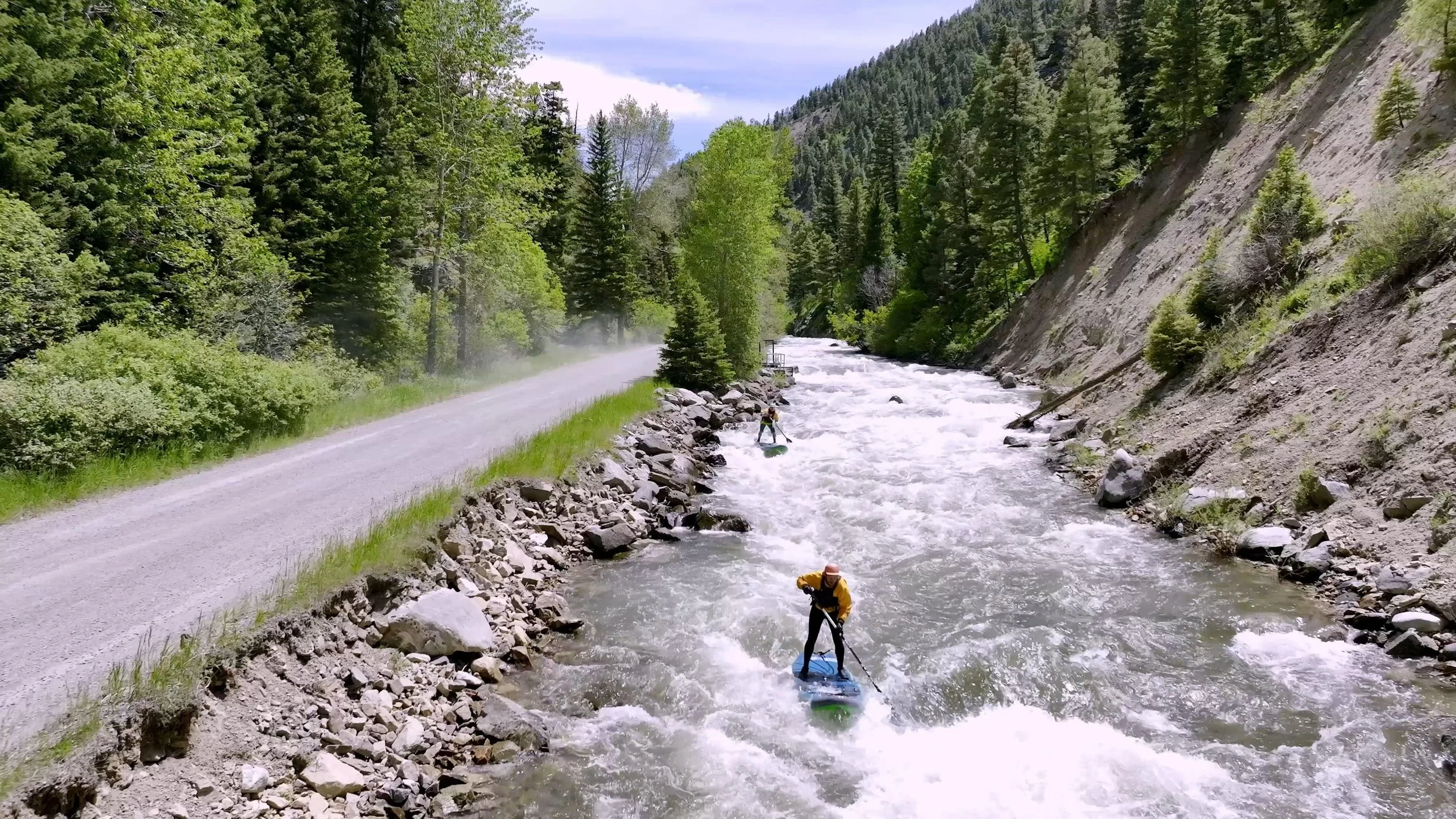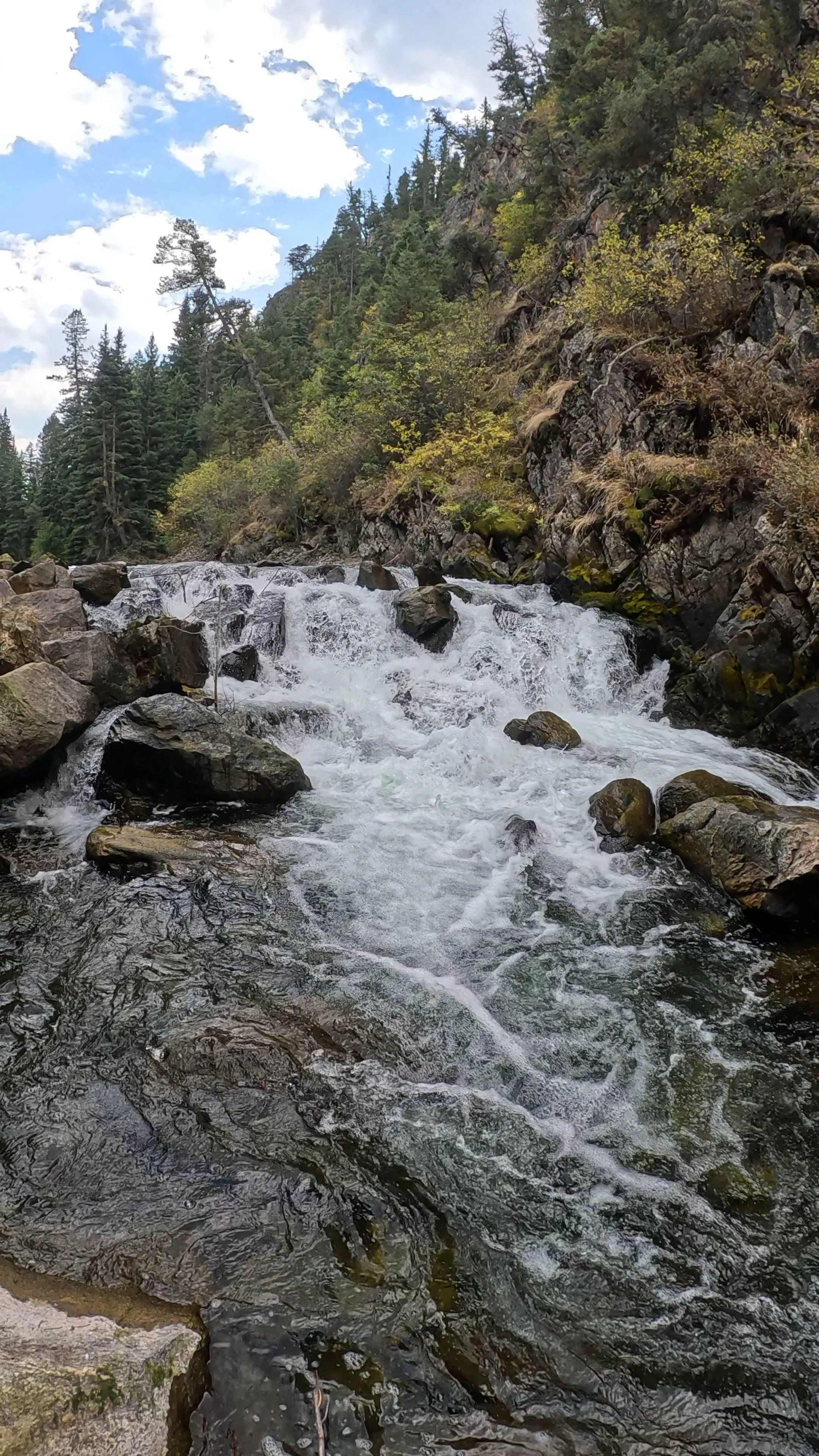Lower Mill Creek - Yellowstone River Tributary
Mill Creek Overview
Mill Creek is a tributary of the Yellowstone River, located in the Absaroka Range of the Greater Yellowstone Ecosystem, near Emigrant, Montana. It’s known for its scenic beauty, recreational opportunities, and its role in supporting wildlife and fisheries. The creek runs through rugged terrain, offering dramatic views and providing both natural and historical significance to the region.
Key Details and Resources
River Gauge: None
American Whitewater Link: None
Put-In Location:
Irrigation Diversion
GPS Coordinates: 45°20'24.6"N 110°35'37.9"W
Access: Put-in at the irrigation diversion in lower water. If putting in above, be mindful that the diversion has 5-6 vertical pieces of rebar spaced every 4 feet or so across it. Running the waterfall down through this section is hazardous especially for an inflatable or a swimmer.
Irrigation Diversion Low Water
Irrigation Diversion Higher Water
Take-Out Location:
Dirt Pull-out
GPS Coordinates: 45°22'40.9"N 110°38'01.3"W
Distance from Put-In: 3.2 Miles
Distance: 5.24 kilometers (approximately 3.26 miles).
Elevation drop: 122 meters (400 feet).
River gradient: 23.29 meters per kilometer (approximately 122 feet per mile).
This relatively steep gradient creates a fast-flowing creek with consistent rapids, making it an exciting option for experienced paddlers
Paddling Mill Creek
While Mill Creek is relatively small compared to other waterways in Montana, its swift-moving waters, especially in spring and early summer during runoff, offer opportunities for adventurous paddlers. However, the creek’s narrow, rocky sections and occasional log jams or debris make it suitable primarily for experienced whitewater paddlers.
Most paddling on Mill Creek would occur in its lower sections (Irrigation Diversion Down), where the water is more accessible, and there is less risk from debris. Nevertheless, the upper section including the waterfall have been run.
The surrounding landscape provides a spectacular backdrop, making it an appealing spot for those looking to explore lesser-known waterways in the region.
Access to the creek can be tricky, as much of the land surrounding it is privately owned by ranches or conservation easements. Paddlers must be mindful of landowner rights and ensure they are accessing the creek legally, adhering to Montana’s stream access laws, which allow the public to use streams and rivers below the high-water mark, as long as they access it from public land.
Geology of Mill Creek
Mill Creek flows through a mix of volcanic and sedimentary rock formations characteristic of the Absaroka Range. The area is dominated by andesite flows and volcanic tuff, remnants of ancient volcanic activity that shaped the Greater Yellowstone region millions of years ago. The rocky terrain contributes to the creek's fast-flowing waters, creating rapids and waterfalls along its course. The valley itself is a result of glacial activity during the Pleistocene era, which carved out the landscape seen today.
Fish Ladder and Waterfall Construction on Mill Creek
Mill Creek, a significant tributary of the Yellowstone River, supports a native population of Yellowstone cutthroat trout in its upper stretches. Historically, the lower portion of Mill Creek was dewatered due to irrigation, acting as a barrier to non-native trout species. In the early 1990s, a new water diversion system allowed for year-round flows, improving fish habitat but also enabling non-native species to migrate upstream.
To protect native trout, the Gallatin National Forest, in collaboration with various agencies, constructed a 12-foot high barrier in 1995. This structure, built using large boulders and designed to resemble a natural waterfall, prevents non-native trout species—such as brook, brown, and rainbow trout—from entering the upper watershed. The protection barrier effectively safeguards the Yellowstone cutthroat population by maintaining their genetic integrity and habitat security.
The restoration efforts didn't stop with the barrier. The U.S. Forest Service and partners implemented further habitat enhancement projects in the Mill Creek drainage. In 1992, an experimental project involved the construction of 18 log and boulder pool structures to increase the cutthroat trout population by creating more diverse fish habitats. Following the project's success, similar enhancements were made along six miles of the stream. These projects, aimed at improving in-stream habitats by adding woody debris and enhancing pool formation, have proven vital in supporting healthy populations of native trout and are a model for habitat restoration in mountain streams.
Native and Pioneer History
Mill Creek and the surrounding Emigrant area have been inhabited for thousands of years by Native American tribes, primarily the Crow (Apsáalooke) people, who utilized the land for hunting, fishing, and gathering. The valley provided essential resources, and Mill Creek was a valuable source of fresh water and fish.
With the arrival of European settlers in the 19th century, the region saw the establishment of ranches and homesteads. Pioneers found the fertile lands near the creek suitable for raising livestock and cultivating crops. The nearby Paradise Valley became a hub of agricultural activity, and remnants of pioneer cabins and ranches still dot the landscape.
Ranching History
The area around Mill Creek has a rich history of cattle and sheep ranching. In the late 1800s, ranchers settled along the creek, taking advantage of its fresh water supply and fertile grazing lands. Several large ranches were established, contributing to the early economy of the region. Over the years, ranching operations evolved, but many properties have been preserved as working ranches or have been incorporated into conservation efforts to protect the region’s natural beauty and ecological health.
Essential Information for Your Float
Length of Float: Approximately 3.5 miles
Duration: 30 minutes depending on water levels
Best Time to Float: Early Summer (June) when alpine runoff flows are optimal for whitewater.
Skill Level: Intermediate to Advanced. This section of the is not suitable for beginners due to its challenging rapids and and fastwater/creek nature. Proper safety gear, including helmets and PFDs, is essential.
Fishing: Mill Creek is also known for its excellent trout fishing. If you’re an angler, pack a rod and enjoy casting in the calmer sections above the fish ladder waterfall.






